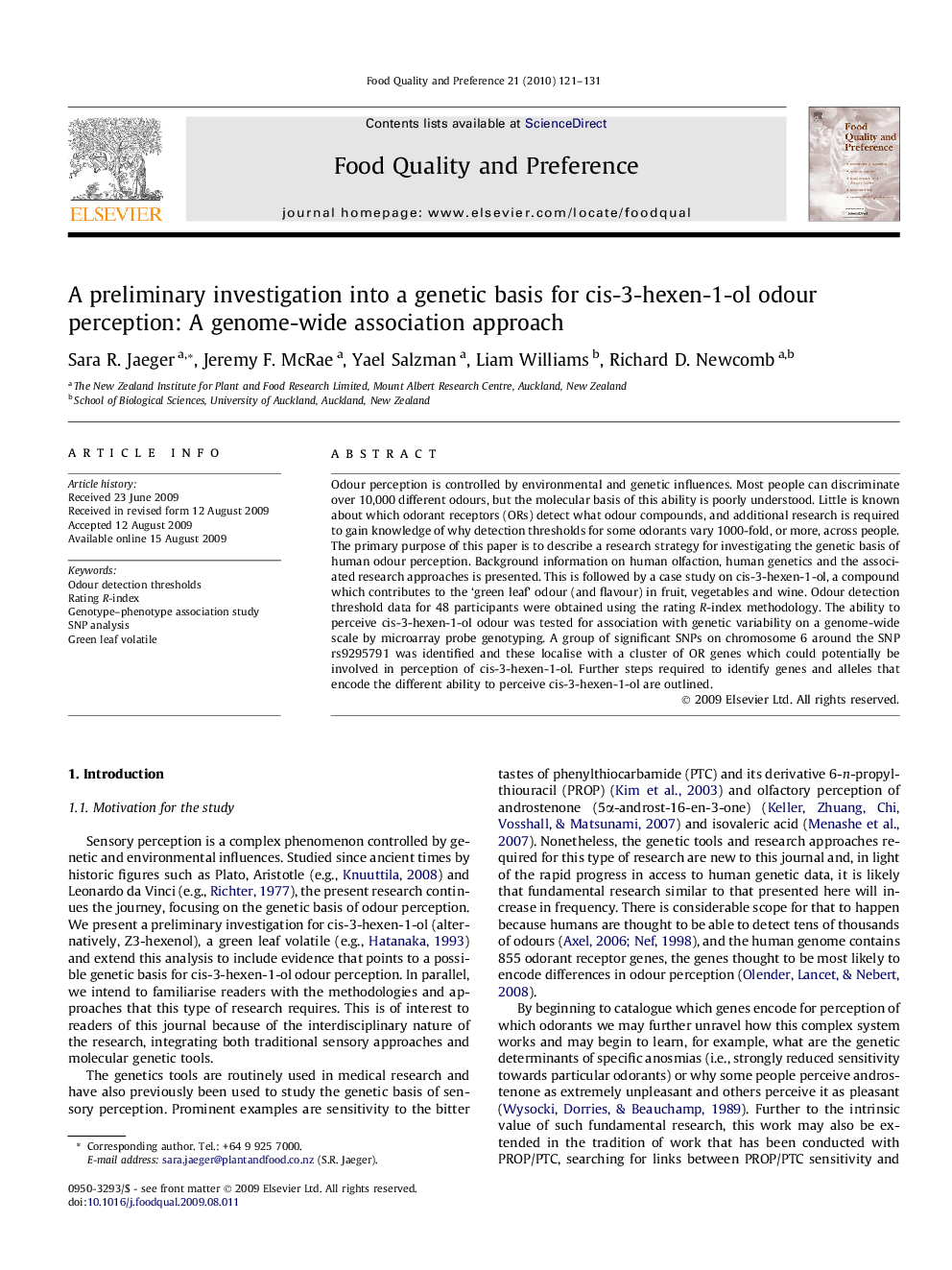| Article ID | Journal | Published Year | Pages | File Type |
|---|---|---|---|---|
| 4317863 | Food Quality and Preference | 2010 | 11 Pages |
Odour perception is controlled by environmental and genetic influences. Most people can discriminate over 10,000 different odours, but the molecular basis of this ability is poorly understood. Little is known about which odorant receptors (ORs) detect what odour compounds, and additional research is required to gain knowledge of why detection thresholds for some odorants vary 1000-fold, or more, across people. The primary purpose of this paper is to describe a research strategy for investigating the genetic basis of human odour perception. Background information on human olfaction, human genetics and the associated research approaches is presented. This is followed by a case study on cis-3-hexen-1-ol, a compound which contributes to the ‘green leaf’ odour (and flavour) in fruit, vegetables and wine. Odour detection threshold data for 48 participants were obtained using the rating R-index methodology. The ability to perceive cis-3-hexen-1-ol odour was tested for association with genetic variability on a genome-wide scale by microarray probe genotyping. A group of significant SNPs on chromosome 6 around the SNP rs9295791 was identified and these localise with a cluster of OR genes which could potentially be involved in perception of cis-3-hexen-1-ol. Further steps required to identify genes and alleles that encode the different ability to perceive cis-3-hexen-1-ol are outlined.
